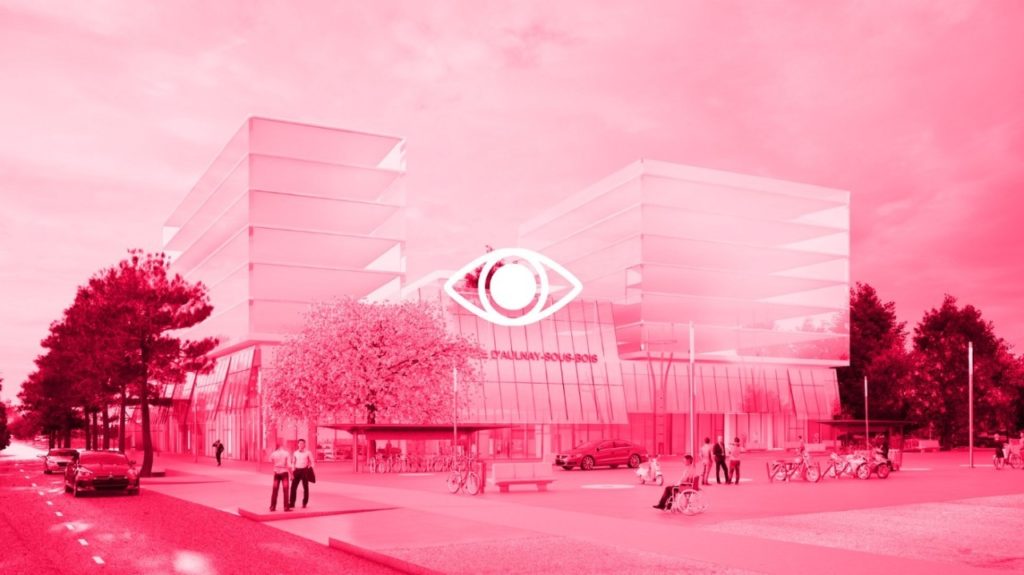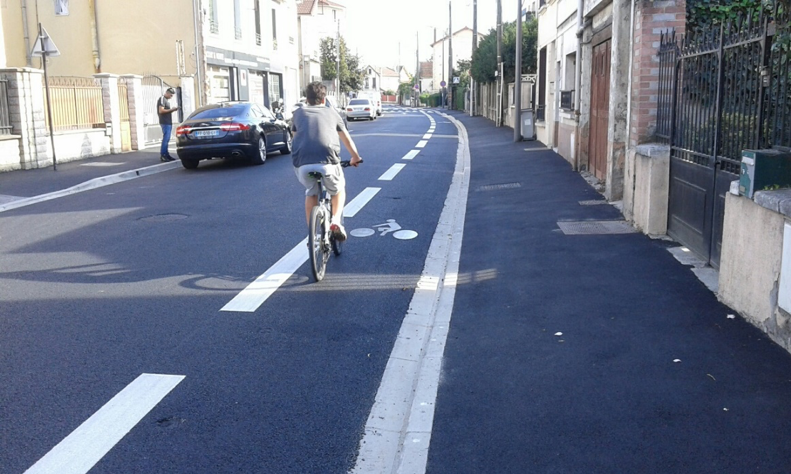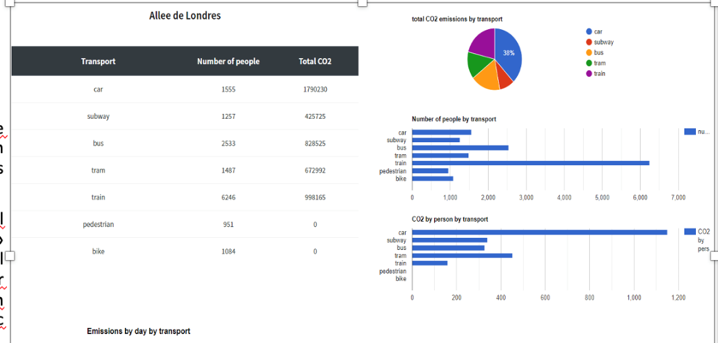In Aulnay-sous-Bois, a Digital Twin for urban mobility developed by Insight Signals
Within the framework of the European project AI4CITIES, dedicated to artificial intelligence and the reduction of CO2 emissions, Cap Digital and the Metropolis of Greater Paris are supporting the deployment of innovative solutions on the metropolitan territory. The member municipalities of the Metropolis are invited to test the prototypes and to co-construct the solutions developed with the winning companies of the European project
Interview between the city of Aulnay-sous-Bois and Insight Signals.
How does the developed solution meet the needs of Aulnay-sous-Bois?
Aulnay-sous-Bois is the 4th largest city in the Seine-Saint-Denis region, and the largest in the Paris Terres d’Envol region, with 86,000 inhabitants. It is an attractive city located at the center of several key areas: Paris Charles de Gaulle and Le Bourget airports, the A1 and A3 highways, and several departmental roads with heavy traffic. Major infrastructure projects such as the conversion of the former PSA site, Val Francilia and the arrival of the Grand Paris Express line 16 metro by 2026 will change the current mobility of the people of Aulnay and the Ile-de-France region coming from or passing through Aulnay-sous-Bois. In addition, the strong development of soft mobility and the studies aimed at creating a dedicated public transport system raise the stakes of thinking about the city of tomorrow in order to meet mobility needs while guaranteeing an optimum living environment.
“Often faced with difficult choices because they are costly and involve long-term commitments, local authorities sometimes make contradictory choices with regard to their objectives. Evaluating the impact of an investment decision “ex ante” with a Digital Twin solution can help integrate the multimodal impacts of mobility by taking into account user behavior, which is crucial to the success of the initiatives undertaken. This is what the Digital Twin solution for urban mobility being developed by Insight Signals proposes.”
What are the benefits of this prototype, and more specifically the deployment of AI, developed as part of the AI4Cities project?
The Digital Twin prototype conceptualized by Insight Signals aims to analyze user behavior, choices, and quantification of CO2 emissions to guide community strategies. This decision support and urban planning tool makes it possible to measure the effects of an urban project on mobility (e.g.: the arrival of the Grand Paris Express). The Digital Twin technology applied to mobility allows evaluating the results observed on the evolution of mobility behaviors, the possible modal shifts, and the reduction of CO2 emissions through the analysis of statistical data.
Thanks to artificial intelligence, several digital twins, embodying multiple development scenarios or options, can be developed, thus providing an overall view of the city in a projected situation, while keeping the carbon neutrality objectives in mind.
A wide range of scenarios and projects can be tested, such as the implementation of a Low Emission Zone (LEZ) or the impact of telecommuting measures differentiated by sector. The impact of a new public transport line on transport flows and CO2 emissions in an area can also be modeled.
“Prototyped on the perimeter of the Greater Paris Metropolis (seven million inhabitants, nearly 130 municipalities), the Digital Twin is based on a generic “meta-model”, applicable to any city.”
Quels sont les impacts attendus ?
Une vision hypothétique au plus proche du réel, du simple changement de sens de circulation, à la réduction de 2×2 voies à 2×1 voie d’une voirie ou l’arrivée du métro du Grand Paris Express. Il deviendra donc possible d’adapter les projets en fonction des objectifs fixés et effets possibles grâce à ces jumeaux numériques, tout en répondant aux enjeux de réduction d’émissions C02. L’opportunité pour les services de la ville de disposer d’arguments prédictifs et tangibles pour présenter leurs projets de mobilité urbaine aux décideurs.
Bien qu’elles opèrent dans des contextes différents et que leurs objectifs en matière de réduction de CO2 soient plus ou moins avancés, toutes les villes européennes sont confrontées à la complexité des choix d’investissement et à la nécessité de mesurer et démontrer les progrès réalisés. Se doter d’un Jumeau Numérique de la Mobilité est donc une nécessité pour la plupart des villes, et certaines (comme Amsterdam ou Helsinki) ont déjà investi dans leur propre « Digital Twin » depuis quelques années. Ce qu’apporte la solution Insight Signals est la prise en compte et la simulation des comportements des usagers, là où les jumeaux numériques existants restent centrés sur les infrastructures et les flux.
“Bâti sur un modèle générique de mobilité, le Jumeau Numérique proposé par Insight Signals est rapidement duplicable d’une ville à l’autre, en y intégrant les données et les contraintes locales. Cette adaptabilité permet d’envisager un déploiement sur de multiples périmètres, et donc de doter les villes d’un outil qui favorise l’optimisation des choix d’investissement et la réduction des émissions de CO2. Des indicateurs comparatifs de la mobilité et du CO2 d’une ville à l’autre peuvent également être construits.”
À propos d’AI4CITIES
Le projet européen AI4CITIES, lancé en 2021 rassemble six grandes métropoles européennes. Il vise à répondre au besoin de savoir déployer des solutions innovantes pour atteindre les objectifs et engagements que les villes se sont fixés en matière de neutralité carbone. Plus d’informations : www.ai4cities.eu
À propos de Cap Digital
Créé en 2006, Cap Digital est le premier collectif européen d’innovateurs du numérique. Il regroupe plus de 1000 structures adhérentes dont 850+ PME, 70 Grandes Entreprises/ETI/EPIC, 70+ écoles/universités/laboratoires ainsi que 10 fonds d’investissement.
À propos de la Métropole du Grand Paris
La Métropole du Grand Paris est une intercommunalité, assise sur la zone dense urbaine continue, qui regroupe 131 communes. Créée par la loi du 27 janvier 2014 de modernisation de l’action publique territoriale et d’affirmation des métropoles, et renforcée par la loi du 7 août 2015 de nouvelle organisation territoriale de la république, elle a vu le jour le 1er janvier 2016. La Métropole du Grand Paris exerce les compétences suivantes :
- Développement et aménagement économique, social et culturel ;
- Protection et mise en valeur de l’environnement et politique du cadre de vie ;
- Aménagement de l’espace métropolitain ;
- Politique locale de l’habitat ;
- Gestion des milieux aquatiques et prévention des inondations (GEMAPI).
Dans le cadre de sa politique en faveur de l’innovation, la Métropole déploie un ensemble de programmes (innover dans la ville, réseaux des explorateurs) pour accompagner les territoires dans leur transition numérique.
https://medium.com/cap-digital/à-aulnay-sous-bois-un-jumeau-numérique-de-mobilité-urbaine-développé-par-insight-signals-645372e9d790 (lien de l’article du Cap Digital)








